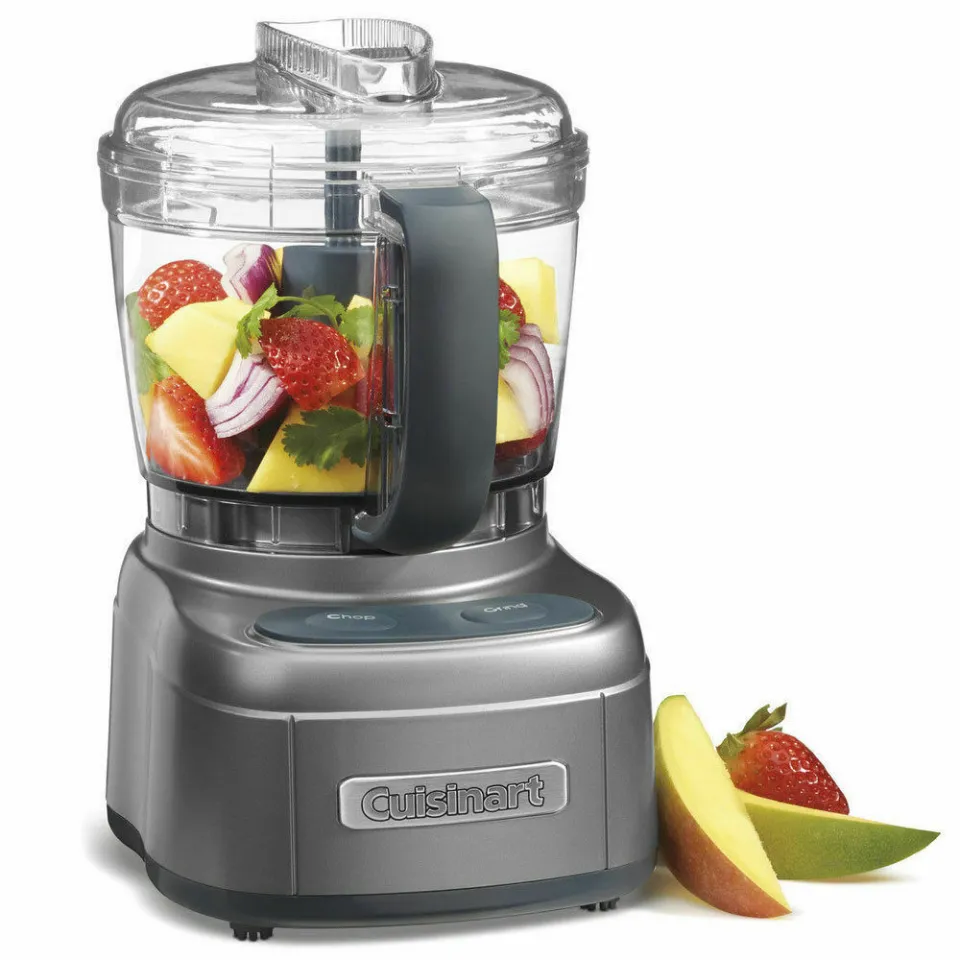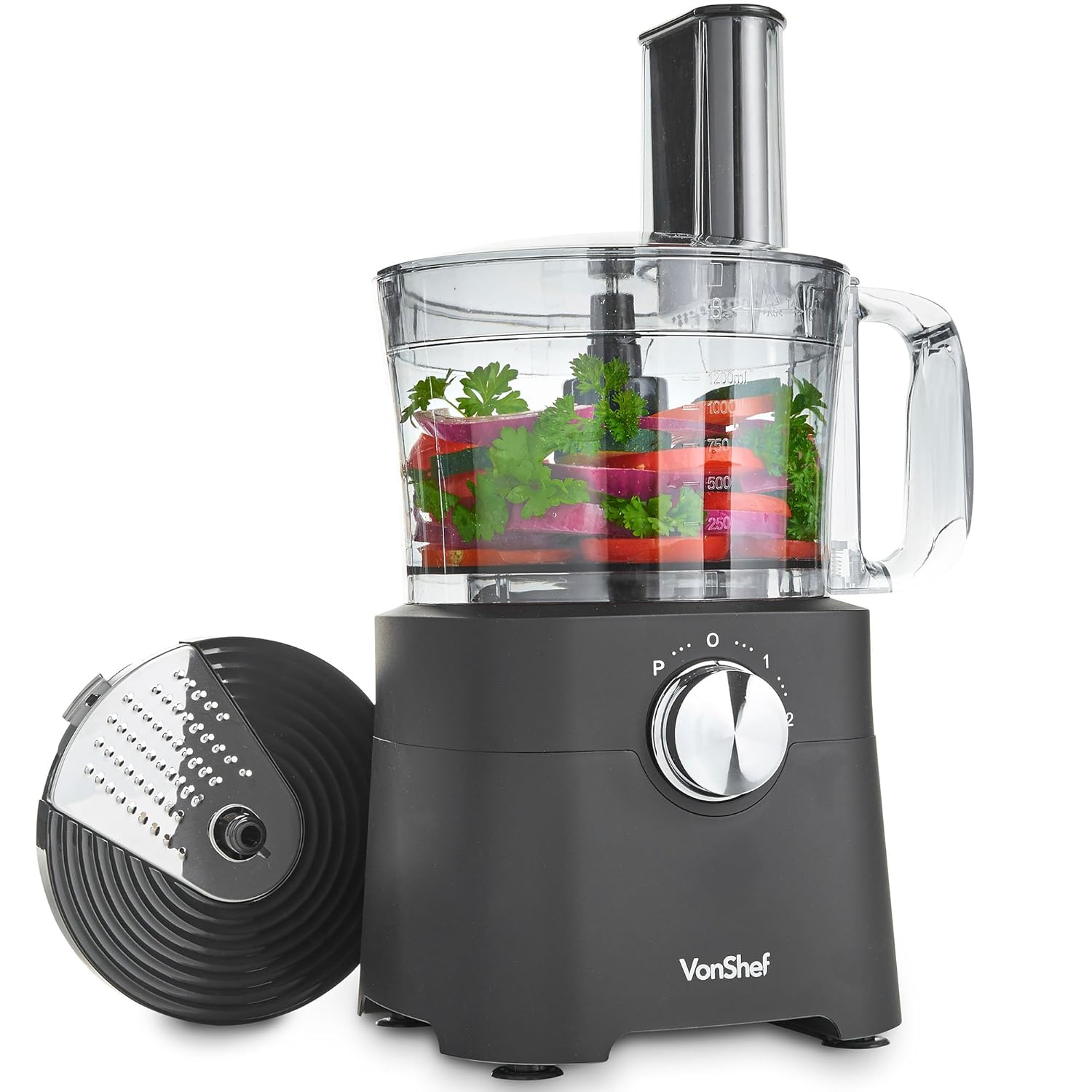In the world of kitchen appliances, food processors and blenders are two of the most versatile tools available. Both can assist you in preparing meals efficiently, yet they serve different purposes and excel at distinct tasks. Understanding the difference between food processor and blender can significantly influence your cooking experience, making your kitchen duties easier and more enjoyable.
This article delves deep into the functionalities, benefits, and ideal uses of both appliances, providing you with comprehensive insights to help you make informed decisions about which tool is suitable for your kitchen needs. We’ll explore everything from their design and functionalities to tips on choosing and using these appliances effectively.
What is a Food Processor?
Functionality and Design
A food processor is a multipurpose kitchen appliance that can chop, slice, dice, shred, knead, mix, and puree various ingredients. It typically consists of a motor base, a bowl with a locking lid, and an assortment of interchangeable blades and disks. The capability to switch between different blades allows you to handle a wide variety of food preparations, from slicing vegetables to making dough.
Food processors are built to handle solid or semi-solid ingredients and can generally manage larger quantities of food compared to blenders. The powerful motor and robust design make them suitable for heavy-duty tasks, making them essential for those who frequently cook meals in large batches.
Uses of a Food Processor
Food processors come in handy for various cooking tasks. Below are some common uses:
- Chopping Vegetables: Quickly chop onions, garlic, and other vegetables to save time in meal prep.
- Slicing and Shredding: Slice cheese or shred vegetables like carrots and zucchini with ease.
- Kneading Dough: Perfect for baking enthusiasts, as these appliances can easily knead dough for bread or pastries.
- Pureeing: While it’s not as common as a blender for this task, food processors can puree ingredients like avocados and bananas for dips or spreads.
- Mixing: Efficient for mixing wet and dry ingredients for batters or sauces, thanks to their sturdy bowl and blades.
- Making Nut Butters: The strong motor can process nuts into creamy nut butters without overheating.
Advantages of a Food Processor
- Versatility: Can perform various tasks, minimizing the need for multiple kitchen gadgets.
- Capacity: Usually has a larger bowl, allowing you to prepare larger quantities in one go.
- Speed: Reduces prep time significantly by handling tasks much faster than manual methods.
What is a Blender?
Functionality and Design
A blender is primarily designed for liquids and soft ingredients. It typically features a tall, narrow container with a rotating blade at the bottom, driven by a motor base. Most modern blenders come with different speed settings and preset modes for handling various tasks like making smoothies, soups, sauces, and more.
Blenders excel at mixing, blending, and pureeing foods, extracting maximum flavor and texture. They can easily crush ice and blend fibrous ingredients, which may not be suitable for food processors.
Uses of a Blender
Blenders are incredibly useful for a range of tasks:
- Making Smoothies: Ideal for blending fruits, vegetables, and liquids into a smooth drink.
- Preparing Soups: Perfect for pureeing soups for a creamy texture without chunks.
- Mixing Batters: Great for pancake or waffle batters, as they can quickly mix dry and wet ingredients.
- Making Sauces and Dressings: Quickly combine oil, vinegar, and seasonings to create dressings and sauces.
- Crushing Ice: Unlike food processors, blenders are built to crush ice effectively, making them perfect for frozen drinks.
- Emulsifying Ingredients: They can efficiently emulsify ingredients like mayonnaise, creating a smooth consistency.
Advantages of a Blender
- Smooth Consistency: Provides a finer texture for liquid-rich foods; great for soups and smoothies.
- Speed: Blending is typically faster for soft ingredients and liquids.
- Ease of Use: Generally simple to operate with straightforward controls.
Key Differences Between Food Processors and Blenders
1. Purpose and Design
The primary difference between food processor and blender lies in their design and intended use. Food processors are built for solid and semi-solid foods, while blenders are ideal for liquids and soft ingredients. This design distinction caters to their individual strengths, making them suitable for different kitchen tasks.
2. Versatility
When considering versatility, food processors take the lead. With the ability to chop, slice, knead, and puree, food processors can handle a more comprehensive range of food preparation tasks than blenders. While some blenders come with food processor attachments, they may not offer the same effectiveness as standalone processors.
3. Capacity
Food processors generally come with larger bowls than blenders, making them ideal for batch cooking. They can process various ingredients at once, which is particularly beneficial when preparing meals for gatherings or family dinners.
4. Texture and Consistency
If your cooking requires a creamy texture, a blender is the better choice. Blenders provide a smoother consistency, making them suitable for smoothies, purees, and soups. Food processors, on the other hand, may not achieve the same silky texture when blending soft foods but are great for chunkier preparations.
5. Motor Power and Speed
Generally, food processors are equipped with more powerful motors, enabling them to tackle tougher tasks like kneading dough or shredding hard cheeses. Blenders are designed for speed and quickly mix and puree softer foods.
6. Cleaning and Maintenance
Both appliances have removable parts that can be washed separately, but cleaning can differ. Blenders usually have fewer parts and can often be cleaned by simply blending a mixture of soap and water, making it quick and effortless. Food processors might require more attention due to their multiple blades and attachments.
Choosing Between a Food Processor and a Blender
When it comes to selecting the right appliance for your kitchen, consider the following factors:
1. Cooking Habits
Reflect on your cooking habits. If you frequently prepare smoothies, sauces, and soups, a blender is your best bet. However, if you engage in varied cooking tasks like chopping, kneading, and shredding, a food processor will be more beneficial.
2. Kitchen Space
Space can be a determining factor in your choice. Food processors often take up more counter space due to their larger bowls and attachments. Consider the space you have available and choose accordingly.
3. Budget
Both food processors and blenders come in a range of prices, so your budget will play a role in your decision. While some high-end models may offer additional features like multiple speed settings, you can find budget-friendly options that serve their primary functions effectively.
4. Task Frequency
Consider how often you’ll use each appliance. If you plan to make smoothies every morning, investing in a good-quality blender may be worthwhile. Yet, if you host dinner parties regularly, a food processor could save you significant time in meal prep.
 How to Use Both Appliances Effectively
How to Use Both Appliances Effectively
Top Tips for Food Processors
- Preparation: Cut larger ingredients into smaller pieces before processing to ensure even results.
- Work in Batches: Avoid overloading the bowl for optimal performance; process in smaller batches for consistency.
- Experiment with Blades: Utilize different attachments to experiment with various textures and chopping styles.
- Maintain and Clean: Regularly clean your food processor to prevent food residue buildup and ensure long-term functionality.
Top Tips for Blenders
- Layer Ingredients Properly: Start with liquids at the bottom, followed by soft ingredients, and ice or harder items on top for optimal blending.
- Pulse Feature: Use the pulse feature to control the texture when blending chunky recipes.
- Avoid Overheating: Limit your blending time to prevent the motor from overheating, especially with thick mixtures.
- Cleaning: Blend warm water and a drop of soap to clean your blender quickly; a simple rinse can work wonders.
When to Use a Food Processor vs. a Blender
Ideal Situations for a Food Processor
- When you need to chop or slice large quantities of fruits or vegetables.
- For any task that requires different types of cutting, such as grating cheese or making salsa.
- When working with dough or firmer mixtures that require more power.
Ideal Situations for a Blender
- When making smoothies, milkshakes, or frozen drinks.
- For pureeing soups or creating consistently smooth sauces.
- When making dressings, sauces, or marinades that require emulsification.
Conclusion
Understanding the difference between food processor and blender can simplify your cooking experience and guide you in choosing appliances that best suit your culinary needs. While both appliances can significantly enhance efficiency and ease in the kitchen, each has unique strengths that cater to specific tasks. By evaluating your cooking habits, space, and budget, you can make an informed decision. Whether you opt for a food processor or a blender—or even both—you’ll find that each appliance serves its purpose in optimizing your kitchen workflow. Embrace the versatility of these tools, and enhance your culinary journey.




